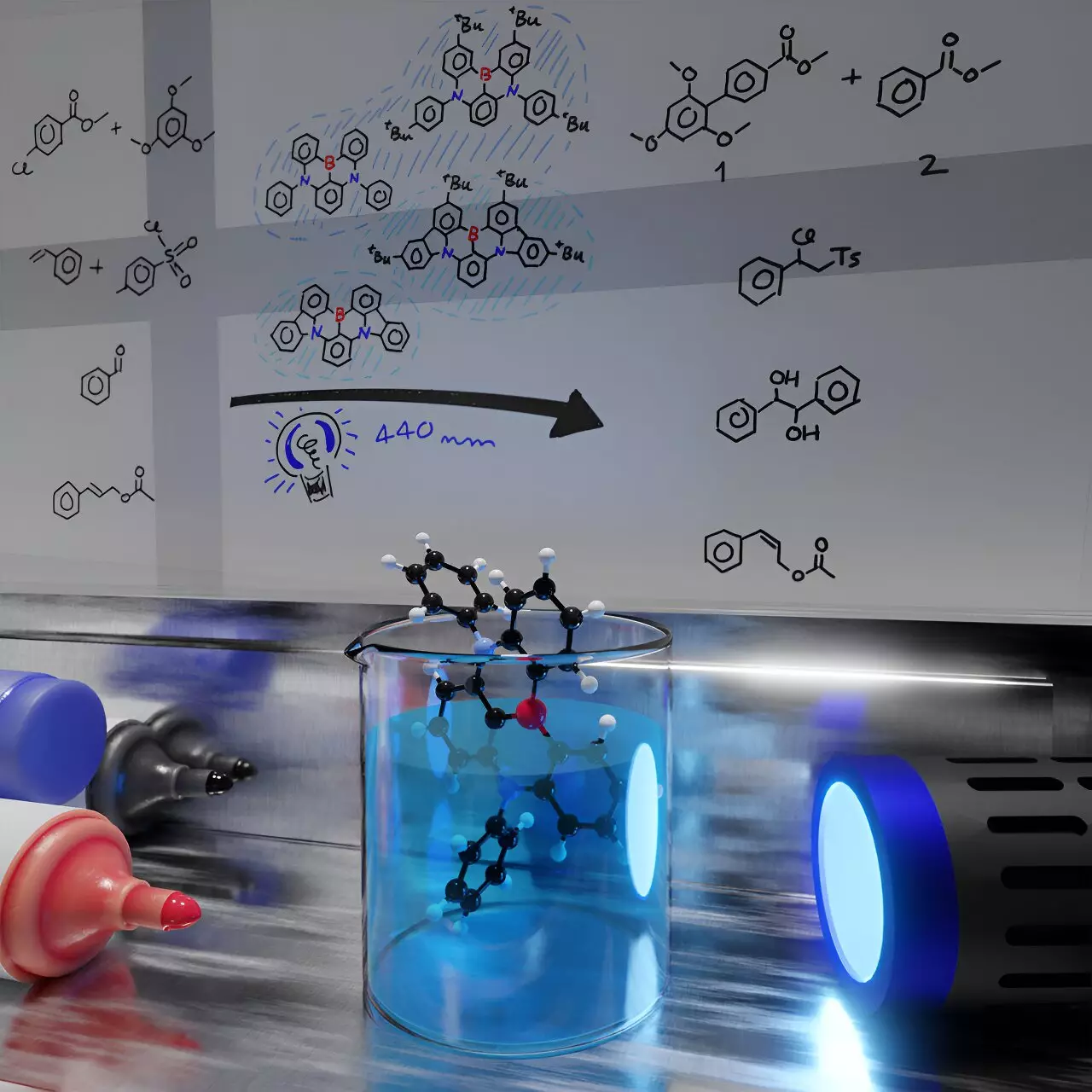In a recent study published by the University of St Andrews, scientists have discovered that organic compounds could potentially replace expensive metal photocatalysts. These organic compounds, originally developed for OLEDs, have shown promising results in various benchmark reactions.
Metal photocatalysts, such as ruthenium and iridium, are scarce, costly, and toxic. This poses a significant issue, especially in industries like pharmaceuticals and agriculture, where trace metal contamination in the final product is a concern. Therefore, there is a growing need for sustainable and affordable alternatives to these metal-based photocatalysts.
Professor Eli Zysman-Colman and PhD student Lea Hämmerling tested four boron- and nitrogen-containing multi-resonant thermally activated delayed fluorescence (MR-TADF) compounds as photocatalysts. They found that these organic compounds performed as well, if not better, than traditional metal photocatalysts in reactions like pinacol coupling, dehalogenations, and E/Z isomerizations.
The study revealed that the intrinsic properties of these organic compounds make them ideal for use as photocatalysts. Their strong absorption in the visible spectrum, insensitivity to solvent polarity, and electron-rich character set them apart as highly effective photocatalysts. This opens up a wide range of applications for these sustainable materials in various industries.
The use of organic compounds as photocatalysts can have significant implications for industries like pharmaceuticals and agriculture. By avoiding metal-based photocatalysts, these industries can reduce the risk of trace metal contamination in their products. The versatility of organic compounds also makes them attractive for a broad range of applications.
Professor Zysman-Colman and his team are working to further explore the potential of organic compounds in photocatalysis. Their research aims to provide viable alternatives to expensive and toxic metal photocatalysts, paving the way for a more sustainable and environmentally friendly approach to chemical transformations.
The study highlights the promising future of sustainable organic compounds as photocatalysts. By leveraging the unique properties of these compounds, researchers are opening up new possibilities for greener and more cost-effective industrial processes.


Leave a Reply